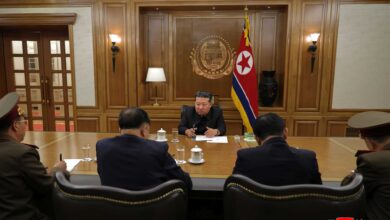On July 29, 2010 Kim Jong Il gave on-site guidance at a factory in Kanggye, Jagang Province, the one which he had visited seven years before.
In front of a horizontal hydraulic press, an official of the factory said: This is the machine you saw during your previous visit. It was manually controlled at that time, but now it has been upgraded into a CNC machine. As a result, workers have been freed from hard, backbreaking labour. Workpieces are processed with a single keystroke, and production efficiency has jumped 2.5 times.
The General asked, “Is the press working now?”
The official replied yes.
A senior official of the provincial Party committee added that the factory had completed the technological upgrading by itself.
Satisfied, Kim Jong Il looked at other modern presses with control panels.
“Excellent!” he exclaimed.
Then he stopped before a CNC rolling machine, which was capable of regulating the thickness of a workpiece by computer.
“Now it is a smart factory,” he exclaimed again.
He stepped into the general control room and studied a computer screen–monitoring the different models of presses, regulating the thickness of the rolls and providing ready access to daily production results.
The official of the factory explained that thanks to the CNC machines two workers were performing the job of seven and the processing time reduced to 35 minutes from six hours.
The General asked how many hours in a row they could run.
The official answered an average of 16 hours a day, compared to eight hours for the old machines.
Kim Jong Il appreciated the workers’ modernization efforts and, surveying the shop floor, asked, “Are all these many things CNC machines?”
“Yes. They are CNC machines connected through an integrated manufacturing system.”
“Well done. Now you no longer need to do paperwork for summing up the results of a day’s work,” said the General, beaming at the officials of the factory.
They said that they had set a high goal for the introduction of CNC technology, pledging that whatever the cost, they would modernize other processes while maintaining regular production.
“I know you are as good as your words,” he said confidently.
He continued to praise them unstintingly for their factory’s splendid appearance and efficient presses.
They said that they had encouraged the workers, through effective political work, to introduce CNC technology, telling them that they must do so to bring happiness to the General as he would not visit the factories that were lagging behind in the CNC drive.
He thanked them all and appreciated their strenuous efforts again.
With a contented smile he declared, “Kanggye is a model!”

